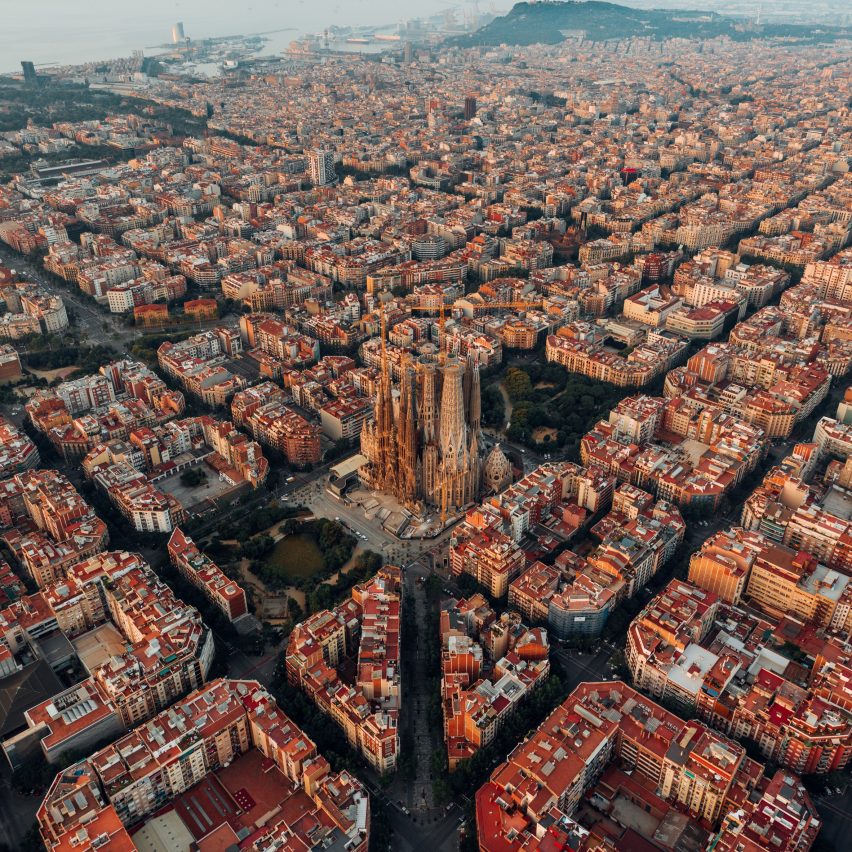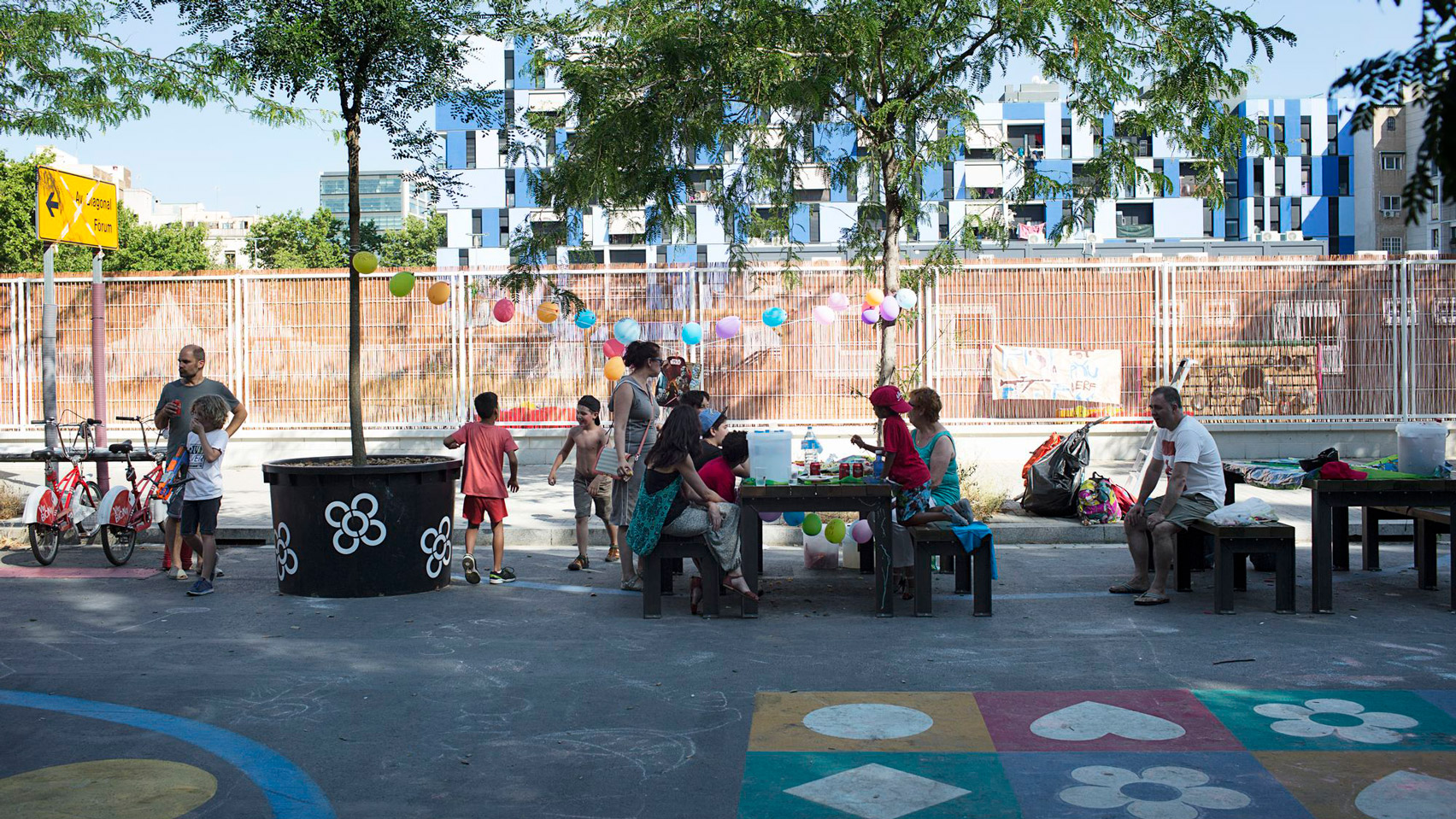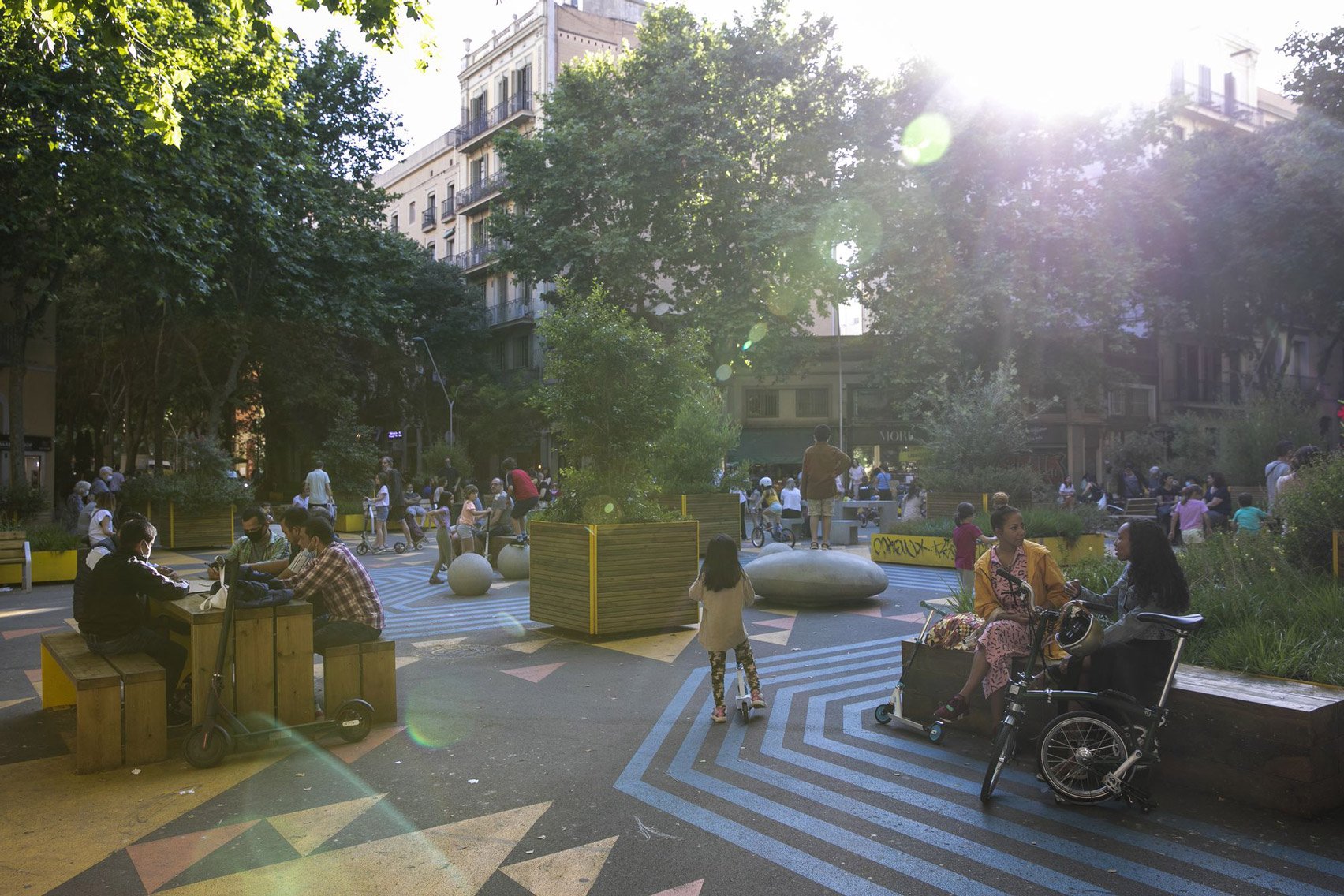
Barcelona‘s city council has announced its plans to transform one in three streets in its Eixample district into green, car-free public spaces to tackle air pollution.
Under the scheme, 21 streets and 21 road junctions will be converted into small parks and public squares – creating 33.4 hectares of land “where the pedestrian and the clean air are protagonists” according to Barcelona City Council.
The transformation, which is expected to take 10 years, is an attempt to curb excessive pollution in the Catalan capital and make it a healthier, safer and more sustainable place to live.
Plans focus on central Eixample district
Barcelona City Council’s masterplan focuses on the streets of Eixample, the grid of streets that surrounds the medieval heart of Barcelona that were laid out when the city needed to extend beyond its walled centre.
Eixample, with its characteristic octagonal blocks separated by wide boulevards, was developed by urban planner Ildefons Cerdà in the 19th century, but has since become choked with cars.

According to the council, this area is being prioritised for the transformation as it “has a very high potential impact on the rest of the city due to population density and high levels of traffic and pollution”.
“The Cerdà plan … was designed to modernise Barcelona at the end of the 19th century and achieve better public health conditions,” Barcelona City Council explained.
“In the current context, this large area of the city is once again an excellent opportunity to recover this spirit of urban transformation and update the Cerdà plan in the 21st century.”
Scheme part of wider Superillas masterplan
The scheme is an extension of the city council’s existing Superillas masterplan that was established in 2016.
Superillas, or Superblocks, are designated areas in Barcelona designed to reduce traffic and maximise public space – tackling the city’s chronic pollution problem.
So far there are six Superillas, which the council claims have resulted in as much as a 33 per cent reduction in harmful nitrogen dioxide levels – a gas that forms from emissions from cars.
In 2019, Barcelona recorded that nitrogen dioxide levels exceeded both the EU and World Health Organisation’s limits throughout the city. The same report stated that Eixample had the highest pollutions levels of all districts and was responsible for 23 per cent of deaths in the area.
One in three streets will be transformed
The goal for Eixample is to convert one in three of its streets into small parks. Alongside the 21 new plazas that will be made at road junctions, this will provide all locals with safe outdoor space within 200 metres of their homes.
To compensate for the reduction in road access, the council has said access to public transport “will be guaranteed” throughout the area.

Work on the scheme is expected to start in 2022, beginning with the transformation of eight sites.
The site’s landscape design will be decided through an open competition. The council’s criteria invite entries that cater to pedestrians, offer shaded spaces in summer and facilitate spontaneous children’s play.
Proposals should also offer space for bar and restaurant terraces, alongside flexible space to accommodate various public events like fairs and concerts.
Growing number of cities creating low-traffic spaces
Barcelona City Council’s plan is the latest in a string of initiatives in cities around the world to tackle car hegemony and maximise green space. Many of these are new pedestrian-friendly streets developed in response to the coronavirus pandemic to support social distancing.
In 2019, Paris revealed plans for an “urban forest” planting scheme, which will see trees and gardens introduced beside four historic sites. The goal is to improve air quality in the French capital and address climate change.
More recently, the local council in Hackney, London, introduced initiatives to reduce car usage in an attempt to become net-zero emissions by 2040 – though the scheme has proven controversial.
Local councillor Jon Burke told Dezeen that planters and bollards that have been installed to support the scheme by alleviating rat-running – cut-through driving to avoid traffic – in residential streets have been subject to protests, graffiti and vandalism.
Elsewhere in Barcelona, ON-A recently imagined enveloping Nou Camp football stadium with a 26-hectare park to demonstrate how large areas of parkland could be introduced into cities.
Main photo is by Logan Armstrong via Unsplash.
The post Barcelona to convert a third of central streets into car-free green spaces appeared first on Dezeen.